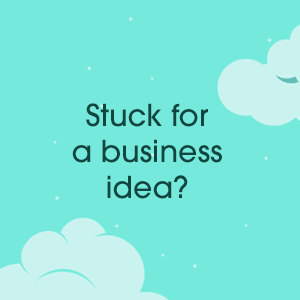Are you stuck in a digital music trap?
Music is everywhere now, but do you own it? With millions depending on streaming services, most listeners don’t realize how locked in they are. You build playlists, mark your favorites, and invest hours shaping your perfect mix, only to find you might not even own it.
Switching platforms feels like starting over, and most people don’t know how to break out. This is the heart of the digital music trap. Luckily, tools like freeyourmusic are changing the game, helping users move, protect, and regain complete control of their collections. Let’s look deeper into how this trap works and how to break free.
The digital music trap is real – and you might be in it
Music today isn’t downloaded – it’s streamed. Services like Spotify, Apple Music, Tidal, and YouTube have made it easy to access any song instantly. But that ease hides a serious issue. Once you pick a platform, your playlists, songs, albums, and preferences are stored inside that service. They’re linked to your account and can’t be shared or moved easily.
Switching from Spotify to Apple Music, for example, means losing your entire music library unless you start from scratch. All the hours spent organizing songs, making playlists, and liking tracks can disappear. That’s the trap – people stay where they are, not because they love the service, but because leaving would be too painful.
Now let’s look at just how deep this problem goes.

The average listener has over 40 playlists
According to Spotify’s public data, the average active user builds over 40 playlists, some even having over 100. These lists take years to make, yet remain stuck on one service. When people switch platforms, their playlists vanish unless a playlist transfer tool is used.
Many users stay with a platform not for its features, but to keep those playlists safe.
Music collection isn’t ownership – it’s rental
In the past, people had CDs or MP3 audio files saved on devices. Now, everything is hosted on cloud infrastructure. Once you cancel your subscription, you lose access to most songs. Your saved albums and liked tracks are stored within the app, not on your device.
That makes your music collection temporary – it exists only while you pay. You do not own your music; you rent it.
High monthly prices with low flexibility
Spotify Premium, Apple Music, and Tidal all charge similar monthly prices, usually between $9.99 and $14.99, depending on individual, student, or family plans. These subscriptions don’t allow sharing across platforms. For example:
| Platform | Monthly Price (Individual) | Playlist Portability | Offline Playback | Cloud Storage |
| Spotify | $10.99 | No | Yes | Yes (limited) |
| Apple Music | $10.99 | No | Yes | Yes |
| Tidal | $10.99 | No | Yes | Yes (HiFi) |
So, while you pay monthly, you’re still limited in access, transfer, and even control of your content.
Playlist transfer tools are a lifesaver
The good news? Services like freeyourmusic offer smart solutions to this lock-in problem. Users can transfer playlists from Spotify to Apple Music, YouTube to Tidal, or any combination with one click.
This tool saves time and helps you reclaim ownership. You don’t have to rebuild everything from scratch anymore. Just move your playlists, and you’re ready to stream again. Thanks to this tech, many users now easily change platforms.
The stream trap: Controlled and monitored assets
Most people don’t know streaming services monitor listening habits through cloud-based monitoring assets. They use this to build user profiles, push recommendations, and even track behaviors. This isn’t always bad, but it shows how little control you have over your listening data.
They use response platforms and security teams to ensure their systems stay strong, but that often means locking you in with tighter security, harder-to-move data, and fewer sharing options.
Stream traps can mislead you into staying
Many music services promote features like “smart playlists,” “daily mixes,” or “exclusive releases” to create a sense of loyalty. But these are often stream traps designed to keep users from leaving. These tools do not help you own your music – they make it harder to walk away.
Instead of helping you build independence, they push you to rely on the service more.
Security is built for the service, not the user
Streaming platforms put much money into security teams, cloud infrastructure, and ways to detect potential threats. However, this investment often supports the platform, not the listener. Users can’t always export their playlists, transfer their files, or access music offline in easy ways.
This setup is designed to delay attackers, use decoy assets, and respond quickly to issues, but it also limits user flexibility.
Your digital music can disappear instantly
Cancel your subscription? Lose your saved music. Log out of an account and forget your password? Say goodbye to all your playlists. Many users experience this sudden loss and have no backup or recovery plan.
Without tools supporting playlist transfer or access to downloaded audio files, losing everything is too easy.
Your playlists should belong to you
Streaming gives convenience, but it also limits control. The more you rely on one service, the harder it is to leave. Don’t let your music habits keep you locked in. Use tools that support freedom and flexibility, because your playlists should belong to you.
FAQs
Can I switch my Spotify playlists to Apple Music without deleting songs?
Yes, freeyourmusic lets you transfer entire playlists between platforms with minimal loss. While some tracks on the new service might be unavailable, most songs will move smoothly.
Is it legal to download and keep audio files from streaming platforms?
Streaming services generally don’t allow permanent downloads. They store audio files temporarily for offline playback, but you don’t own them. You should buy digital files or CDs to own the music entirely.




